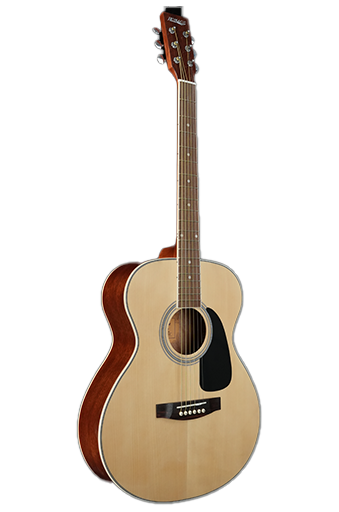
Acoustic guitar Series: How to Reduce String Squeak
String squeak is a common issue that many acoustic guitar players face, especially when sliding fingers along the strings or shifting positions quickly. While some players embrace it as part of the natural sound of the guitar, others find it distracting and want to minimize it.
If you're looking to reduce string squeak, there are several techniques and adjustments you can make—both in your playing style and in your guitar setup. In this guide, we’ll explore the causes of string squeak and provide practical solutions to help you achieve a smoother, cleaner sound.
---
Understanding String Squeak
String squeak occurs when your fingers slide across the strings, creating friction that produces a high-pitched noise. This is most noticeable with:
- New strings (which have more texture and grip)
- Uncoated strings (as opposed to coated strings, which reduce friction)
- Dry or rough fingertips (due to lack of moisture or calluses)
- Fast position shifts (quick slides between frets)
While some squeak is inevitable, excessive noise can interfere with recordings or live performances. The key is finding a balance between playability and minimizing unwanted sounds.
---
1. Choosing the Right Strings
The type of strings you use has a significant impact on string squeak. Here’s how different string materials and coatings affect noise:
A. Coated vs. Uncoated Strings
- Coated strings (e.g., Elixir, D’Addario EXP) have a thin polymer layer that reduces friction, making slides smoother and quieter.
- Uncoated strings (like standard phosphor bronze or 80/20 bronze) produce more squeak but often have a brighter, more resonant tone.
Recommendation: If squeak bothers you, try coated strings. They last longer and reduce finger noise significantly.
B. String Gauge
- Lighter strings (e.g., .010-.047) are easier to bend but may squeak more due to less tension.
- Heavier strings (e.g., .013-.056) have higher tension, which can reduce sliding noise but require more finger strength.
Recommendation: Experiment with different gauges to find a balance between playability and reduced squeak.
C. String Material
- Phosphor Bronze: Warm tone, moderate squeak.
- 80/20 Bronze: Bright tone, slightly more squeak.
- Silk & Steel: Softer feel, less squeak but less volume.
Recommendation: Phosphor bronze is a good middle ground for tone and reduced noise.
---
2. Proper Finger Technique
How you press and slide your fingers affects squeak. Here are some technique adjustments:
A. Lighter Pressure When Sliding
- Pressing too hard increases friction.
- Try lifting slightly when shifting positions, then re-fretting notes.
B. Use the Side of Your Fingertips
- The softer, smoother parts of your fingers produce less noise than the center.
- Adjust finger angles to minimize direct string contact.
C. Economy of Motion
- Plan finger movements to avoid unnecessary slides.
- Practice slow, controlled shifts to build muscle memory.
---
3. Hand Moisture and Finger Care
Dry or rough skin increases friction. Here’s how to manage it:
A. Wash Hands Before Playing
- Oils and dirt from your hands can make strings sticky.
- Clean hands reduce residue buildup on strings.
B. Use Finger Ease or Fast Fret
- These lubricants reduce friction without affecting tone.
- Apply sparingly to avoid a slippery feel.
C. Build Calluses
- Well-developed calluses create a smoother surface for sliding.
- Regular practice helps toughen fingertips naturally.
---
4. Guitar Setup Adjustments
A well-set-up guitar can minimize unwanted noise:
A. Action Height
- Higher action can increase squeak due to more finger pressure needed.
- Lower action reduces effort but may cause buzzing if too low.
Recommendation: Have a professional set up your guitar for optimal playability.
B. Nut and Saddle Material
- Bone or synthetic nuts/saddles reduce friction compared to cheap plastic.
- Graphite or Teflon nuts can help strings slide smoothly.
C. String Stretching and Break-In
- New strings stretch and settle over time, reducing initial squeak.
- Stretch them manually when restringing to speed up the process.
---
5. Recording and Performance Tips
If you’re recording or playing live, these tricks can help:
A. Use a Noise Gate
- A noise gate pedal or plugin can cut out squeaks between notes.
B. Post-Processing in Recordings
- Use EQ to reduce high-frequency squeaks.
- Manual editing in DAWs can remove unwanted noises.
C. Play with a Lighter Touch
- A softer attack reduces squeak while maintaining dynamics.
---
Conclusion
String squeak is a natural part of playing acoustic guitar, but with the right strings, technique, and setup adjustments, you can minimize it. Experiment with coated strings, refine your finger movements, and keep your hands and guitar in good condition. Over time, you’ll develop a smoother playing style that balances expressiveness with clean, controlled sound.
By implementing these tips, you’ll spend less time worrying about unwanted noise and more time enjoying your playing. Happy strumming!

Copyright © 2003-2025 Longsheng Musical Instrument Co., Ltd. Powered by:Lucky Cloud Network Technology All rights reserved.
SitemapThis website uses cookies to ensure you get the best experience on our website.
Comment
(0)